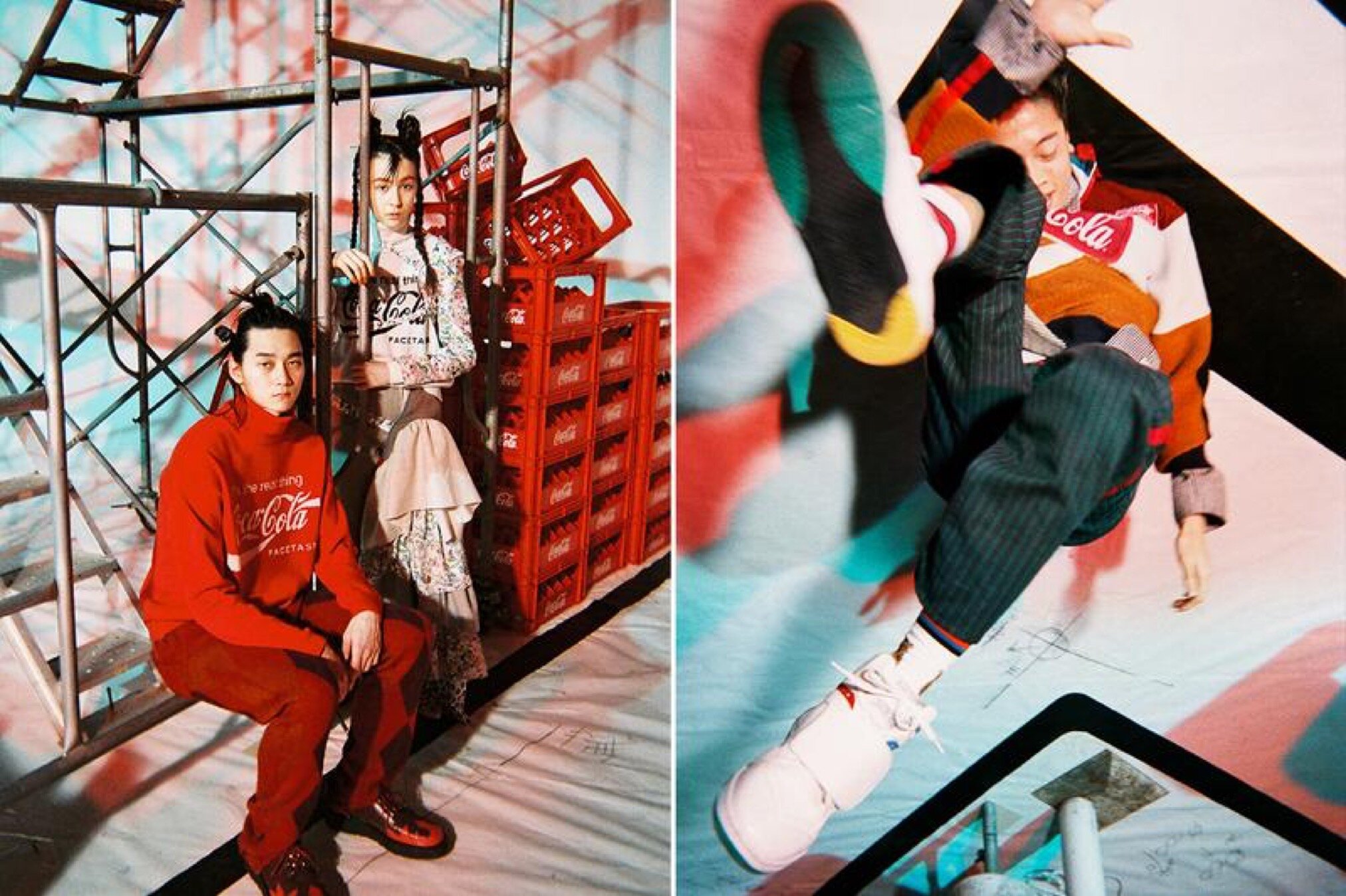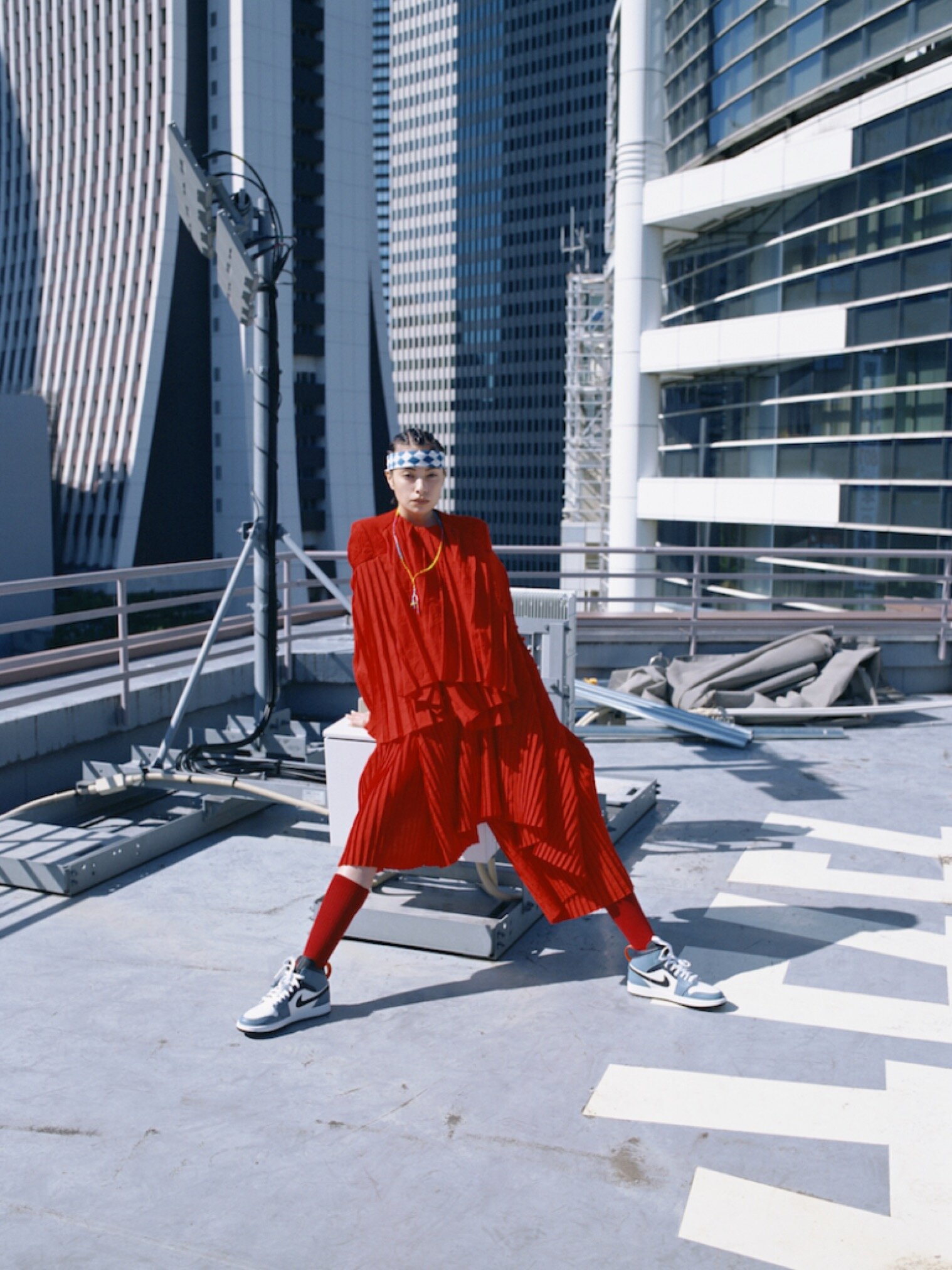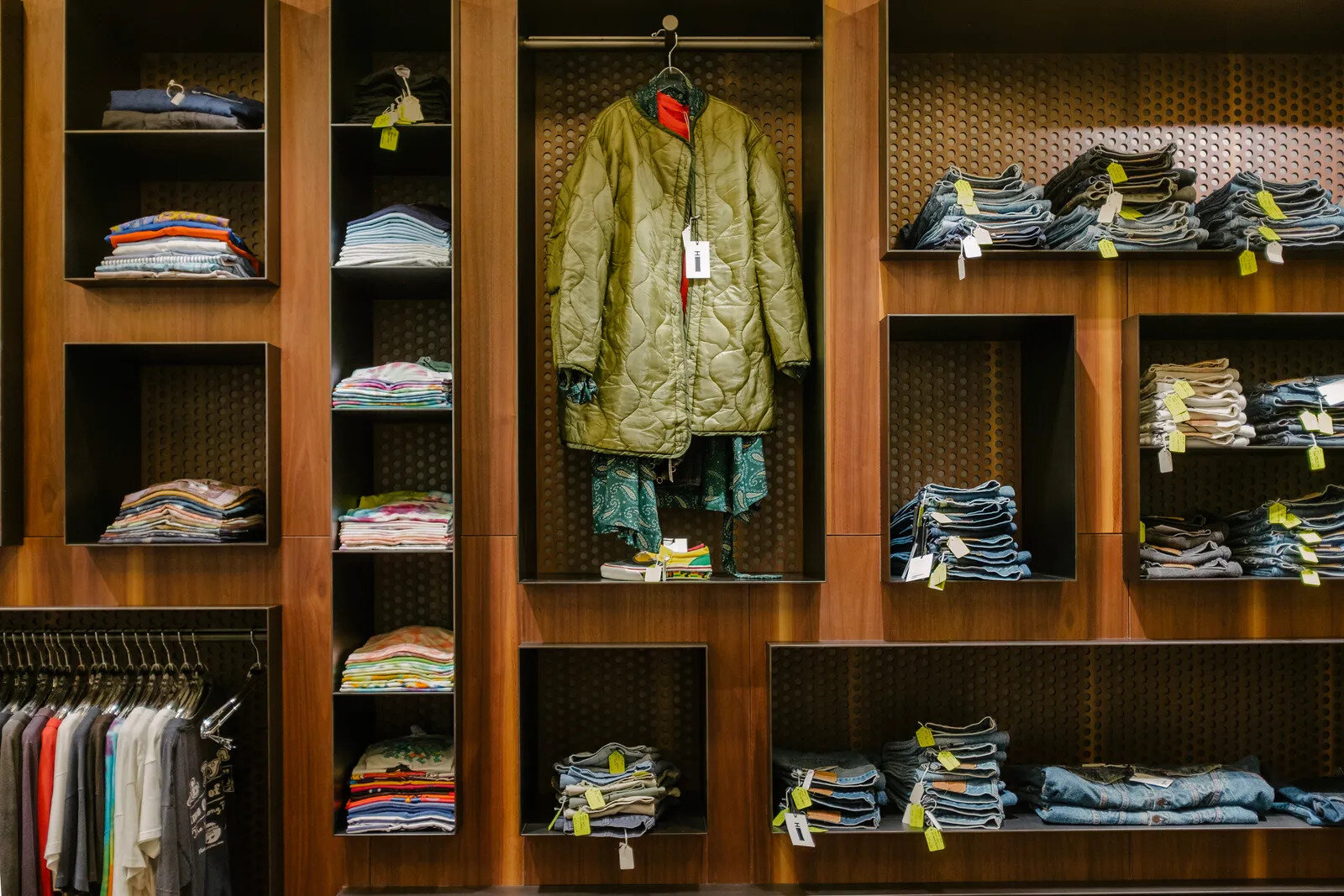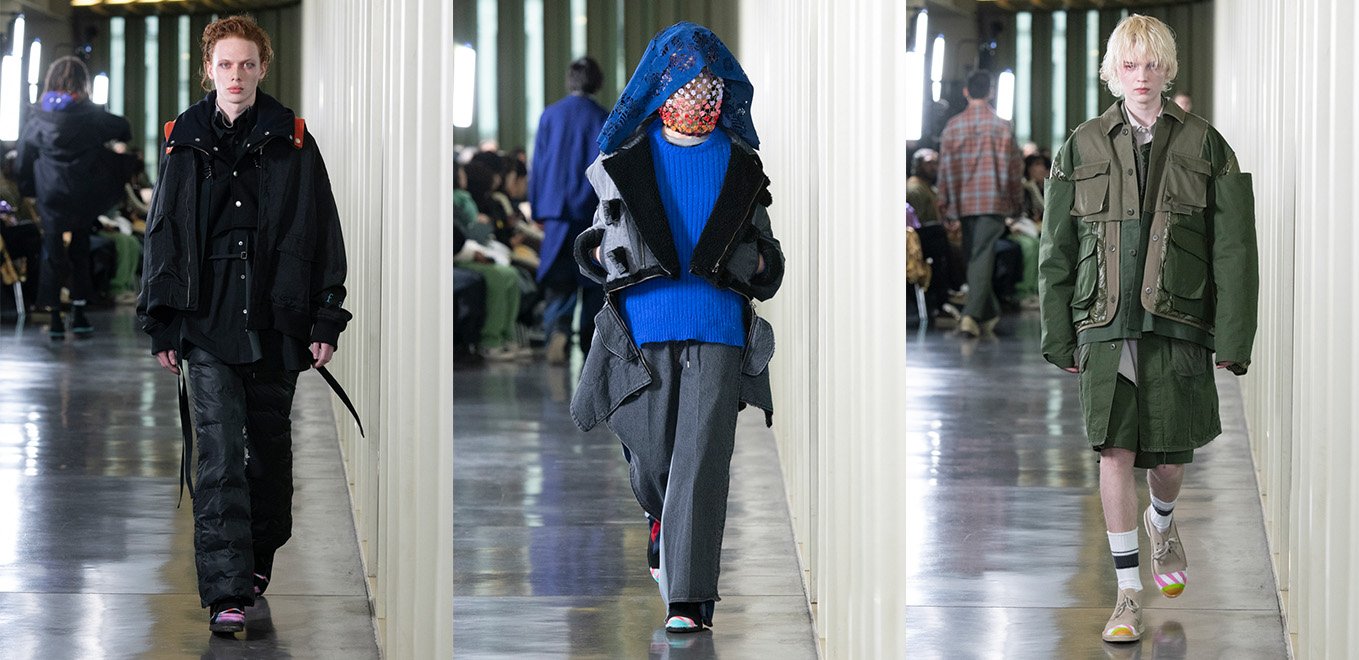EXPERIMENTAL LAYERS OF JAPANESE FASHION - FACETASM

The process of shaping a diamond through polishing such as the brilliant cut, requires a lot of expertise and precision.
To best display a diamond gemstone’s properties, several different diamond cuts must be developed. The most popular cut is the “round brilliant” and consists of 58 facets. Flat faces that reflect the underlying symmetry of the crystal structure. Each facet reflects the light and creates the sparkle jewelers work so hard for.
Like a prism, the diamond appears different depending on how you hold and twist it in the light. This idea of many different “facets” was also an inspiration to Hiromichi Ochiai, founder of Tokyo based brand “FACETASM.” For him, it was essential to combine multiple meanings to show the various sides and the many different faces that he expresses through his garments.
Founded in 2007, FACETASM has been making waves in the industry for their fine craftsmanship and focus of experimenting with different fabrics and silhouettes. There is no specific style you can pinpoint to FACETASM since the brand delves into an array of styles and very often fuses them to create a new meaning.
Hiromichi Ochiai
Within the fashion industry, one might find it challenging to create new identities every season. When you look at the runways around the globe, many designers build up on a theme from season to season. Ochiai follows another path, his collections are always entirely distinct from the last one.
A graduate of Japan’s Bunka Fashion College, Ochiai graduated in 1999 and immediately wanted to start in the fashion industry. The first stations, however, were in the textile industry, where he worked at Guildwork and NGAP. The experiences he could gain here were enriched by his work with a wide range of fashion leaders such as Undercover and Comme des Garcons. During his time in the textile industry, he found his love for fabrics and different materials that still can be seen in recent collections and are an integral part of the FACETASM DNA.
Another trademark of Ochiai’s work is the use of the Trope L’oeil Layering technique that is often used in fashion as an optical illusion.
Ochiai and FACETASM enjoy great popularity within the Japanese industry and amongst young fashion enthusiasts but are still somewhat under the radar overseas. As the first Japanese label, the company had been nominated as a finalist for the LVMH Prize in 2016. In the same year, FACETASM attended the runway in Milan with a selection of Giorgio Armani.
Ever since the reputation of a luxury brand, it grew in Europe and America. Nevertheless, Ochiai didn’t want to neglect the brands street attitude. He wants to keep his credibility and see his garments being worn on the streets in many forms. FACETASM has many facets.
To fully comprehend the FACETASM universe, we sat down with Hiromichi Ochiai for a brief interview.
How did growing up in a city like Tokyo influence you as a person?
Growing up in Tokyo made me to be free in fashion.
Your urge to become a designer is rooted back in high school, what was the motivation for you to work on your dream of having your own brand? Who did you look up to?
The first dream I ever had was to become a designer. When I was a teenager, I was very enthusiastic about Jun Takahashi's Undercover.
You then graduated from Bunka Fukuso Gakuin. How did that affect your way of becoming the designer you are today?
It was a great opportunity to meet friends at Bunka Fashion College who had the same aspirations as me.
Can you remember the first garment you designed?
Yes, it was an army shirt poncho with a dismantled military quilted lining.
Did getting recognition in an international industry always play a role in your idea and how difficult is it for a Japanese Designer to be recognized by the western fashion industry?
I was never focused on getting international recognition because I was prioritizing my creations. I think it's difficult even for non-Japanese people to get recognition. Also, it should not matter whether you are a Japanese designer or not, I think wonderful creations are equal.
Let’s talk about FACETASM
How much of Tokyo is woven into the brand identity?
I was born and raised in Tokyo, so I don't know if it's woven in. If it is, I'm not aware of it.
However, if people consider it to be Tokyo-like I’ll take it as a compliment.
You work a lot with layering physically but also optical illusion. What fascinates you about this?
I always try to incorporate various cultures and feelings into the design. By layering all these different items and facets, I want to give it new meaning.
Speaking of identity, what do you want people to see in FACETASM?
Nothing in particular. I think it’s always good to have different perspectives and opinions from various people.
From workwear to high fashion everything can be seen from you. Where do you get it from?
By respecting fashion in any shape of form, past or present.
How would you explain the contrast of dressing in Japan, with サラリーマン (salarymen) on the one hand and so many influential on the other?
I don't really know, but when it comes to clothing, I feel there is a lot of freedom in fashion in Japan.
What would you consider ‘fun’ in a way of producing fashion?
To be able to create something that moves people's hearts. There are various ways of getting to the final product. I always try to live with creativity in mind, and I try to go to the site as much as possible for things that interest me.
Photos by Will Goodan
Recently you had the chance to give your personal approach on the Jordan AJ1 mid. What did you want to add to the iconic silhouette?
Of course I wanted to mix our both worlds but since it is such an iconic design, I was conscious of not breaking it.
At Facetasm materials and fabrics play a big role. How do you choose those and why is this such an important key to you? Is this connected to your job at Guildwork?
Working at a textile company on the development of fabrics for domestic brands and by working with various fashion houses rather than training in one house, I was able to learn a lot of different values and design processes. It was a good experience.
This year because of the pandemic you shot a video instead of organizing a runway. What was it like?
It was a great opportunity to show the relationship between the movement of clothes and the city of Tokyo that cannot be expressed on the runway.
What can we expect from FACETASM in the future?
I never really think about it. At the moment I want to do my best, together with the team. And to do what is right in the present and to pave the way for the future.
FW ‘19
You get the opportunity to place a spot on the screens of Shibuya Square for 30 sec. It can be everything. What would you want to show there?
A message of love!
Thank you very much for your time
About the author:
Peter is a writer and editor who has devoted a lot of his activities to the Japanese culture. Partially located in Tokyo he academically studied many aspects of the Japanese society and culture to get a better understanding of Japan.
Born in 2000, Ihsan is an Indonesian student who will soon finish a degree in Business Management. With a keen interest in clothing and all things related to design, he aims to tap into the different subcultures surrounding it.











